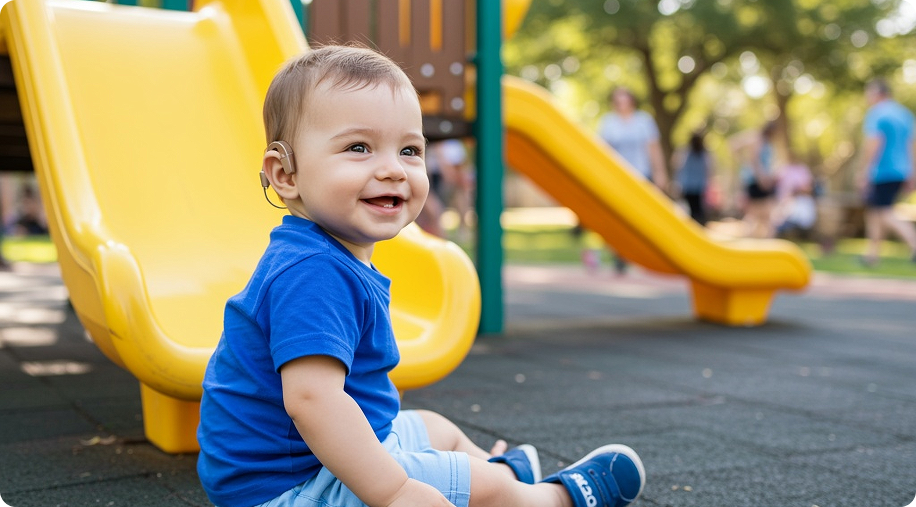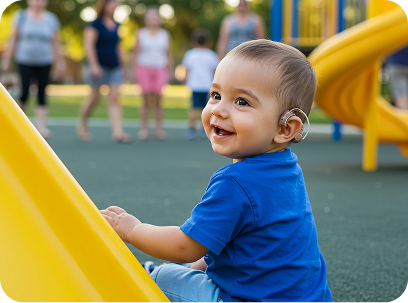Cochlear implants:
a solution for children born with hearing disabilities

On average, 2 babies in every 1,000 are born with permanent hearing loss. This situation is not only devastating for parents but also presents many challenges for these children as they grow. New cochlear implant technology is having a dramatic impact for young patients with hearing impairments.
What is a cochlear implant?
A cochlear implant is an electronic device that replaces the function of the inner ear, transforming sound into electrical energy. This energy is then used to stimulate the auditory nerve, sending signals to the brain. The implant has two sections:
-
External: Placed behind the ear. This picks up sounds from the environment and organizes the sounds received.
-
Internal: The device is surgically implanted in the temporal bone of the ear, and converts signals received into electrical impulses, then sends them to different regions of the auditory nerve.
A cochlear implant requires a surgical procedure. Before and after the operation, the patient works with a multidisciplinary team that carefully selects which patients will benefit from an implant, then guides them through the process as the patient learns to hear as naturally as possible.
“Not everything begins and ends with the surgical procedure; there is continuity in the treatment. To this end, we use online working models through telemedicine that allow us to connect with patients anywhere in the world. We can even access each patient’s implant to study and analyze how it works, introduce new calibrations and improvements to optimize the results for those patients,” says Dr. Manuel Manrique, international expert in hearing implants and Director of the Department of Otolaryngology at the Clinica Universidad de Navarra Hospital.

Who can receive cochlear implants?
Cochlear implants are intended for patients with varying degrees of hearing loss. Results vary depending on a number of factors, including the age at which the implant is fitted.
According to Dr. Manrique, the best results are obtained in children, especially those treated before the age of one. “These children are able to understand 100% of what they hear. They are capable even of developing bilingualism or trilingualism.”
In the case of adults with developed language, but have lost the ability to hear for any number of reasons, sound detection begins immediately after the implant is activated and, on average, depending on each patient’s case, within a week they are able to follow a conversation without any lip-reading support. In cases with more severe hearing damage, the process may be slower.
What improvements does a child experience after receiving a cochlear implant?
Each patient’s success depends on their individual condition. In the case of children who are deaf at birth, the use of a cochlear implant has a very high success rate, as it exposes the child to sounds during a very important development period of their speech and language skills. In fact, research has shown that when children receive a cochlear implant at an early age followed by intensive therapy, they often have better hearing, understanding of sound and music, and speech than children who received implants at an older age.
“Children who have never heard and who begin to develop language thanks to the signal they receive through the implant produce language similar to that of children who hear normally, making it completely understandable to anyone. This demonstrates that what they are hearing is similar to what they are expressing through their language,” says Dr. Manrique.
Could I have access to a cochlear implant?



To learn more about how to access this treatment and the benefits of our plans, consult your insurance agent.
This information is for informational purposes only and does not replace the information provided by your treating physician.





